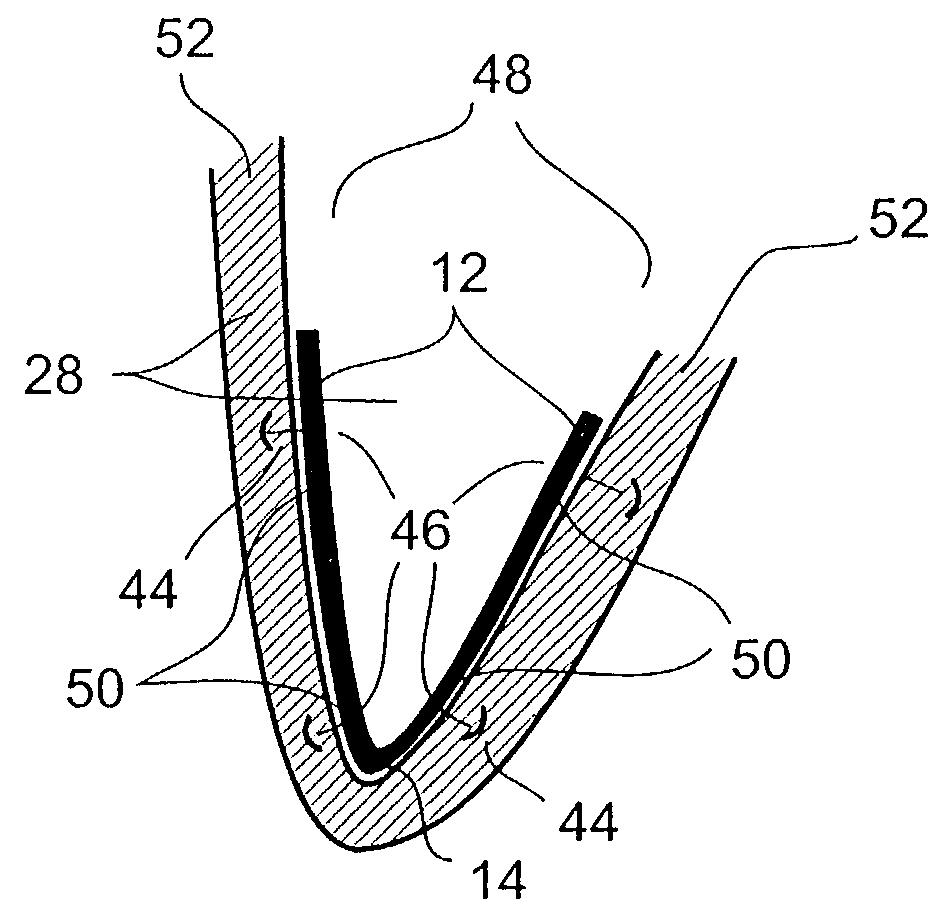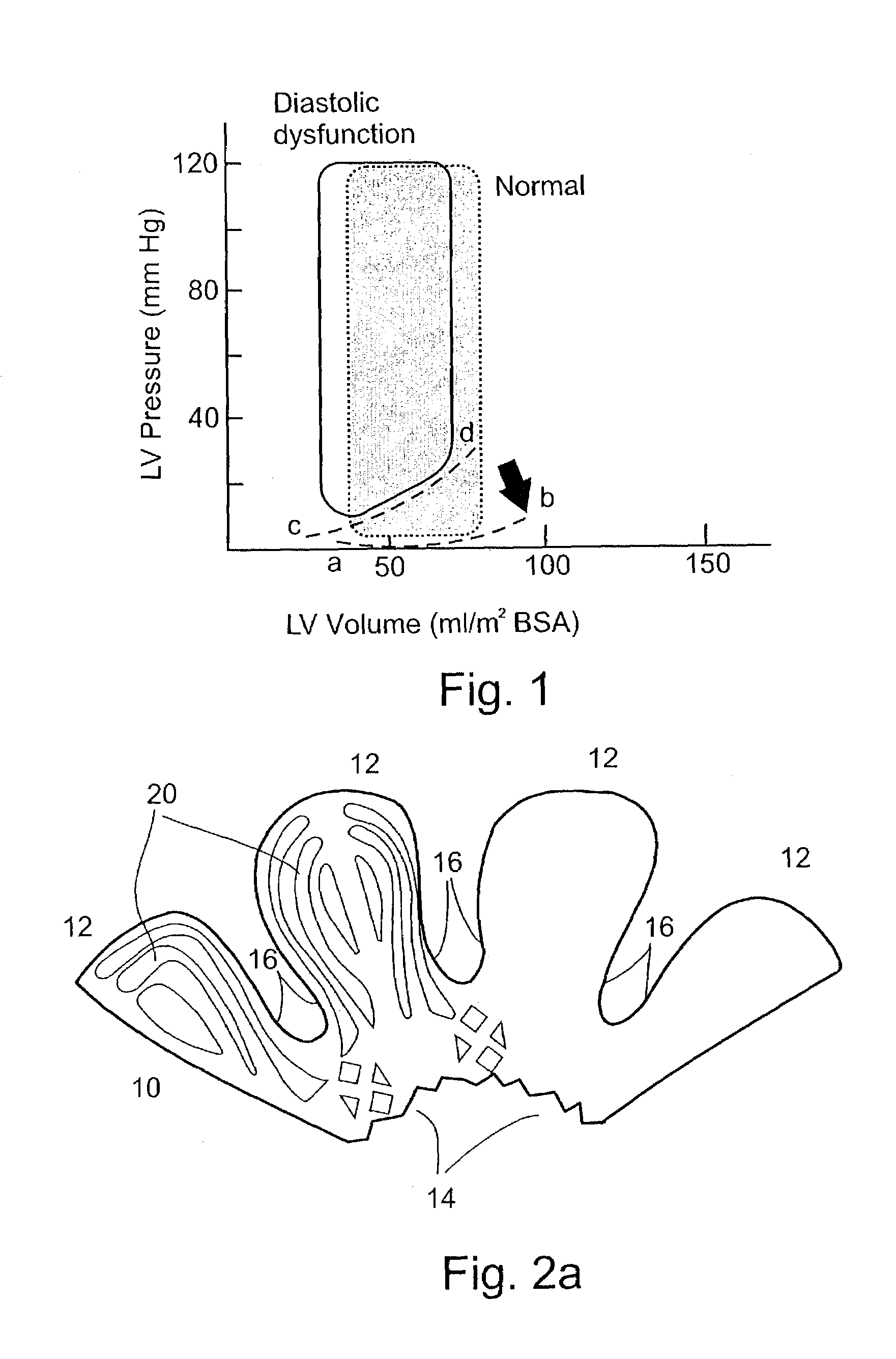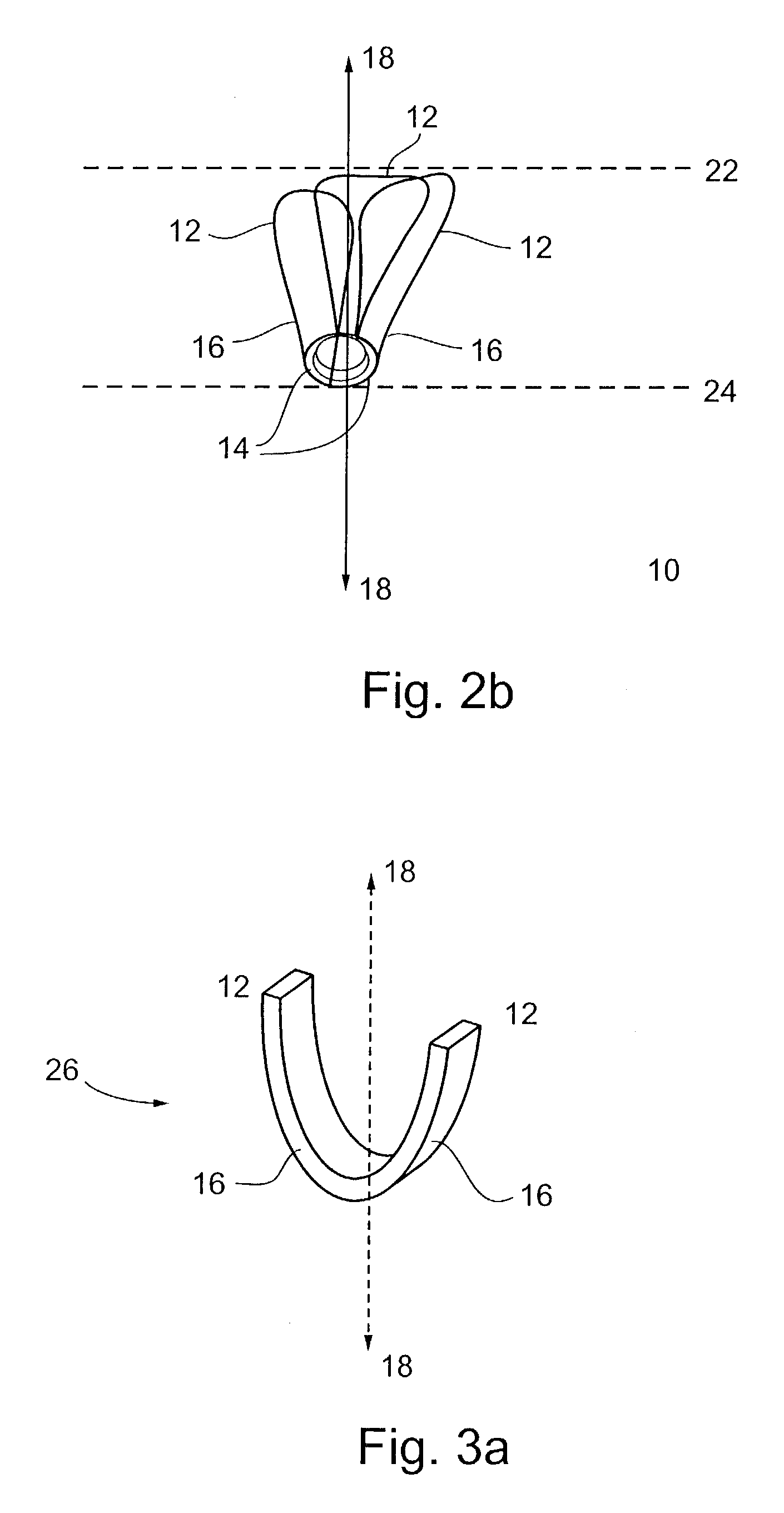In-vivo method and device for improving diastolic function of the left ventricle
a diastolic function and in-vivo technology, applied in the field of in-vivo methods and devices for improving can solve the problems of increased modulus of chamber stiffness, congestive heart failure, and implicated diastolic dysfunction, so as to improve the diastolic function of the left ventricle, and reduce the intracardiac hydro
- Summary
- Abstract
- Description
- Claims
- Application Information
AI Technical Summary
Benefits of technology
Problems solved by technology
Method used
Image
Examples
example
In Vivo Demonstration of the Implantation and Use of Various Devices of the Present Invention in a Mammalian Subject
Method
Anesthesia and Instrumentation:
[0326]A healthy sheep, (12 month, 31 Kg) was anesthetized (induction with xylazine+ketamine+valium; intubation and maintenance of anesthesia with enflurane; monitoring with ECG and saturation). A left thoracotomy incision was made and the chest was entered through the 5th intercostal space. The pericardium was opened widely to allow access to the left ventricle. A fluid filled catheter was inserted into the left ventricle via the left atrial appendage and mitral valve, to allow continuous left ventricular pressure measurement and data acquisition to a PC. The distance from the base to the apex was 5–6 cm.
Preparation for Device Attachment:
[0327]After recording stable LV pressures, three segments of 8 mm diameter Dacron tubegrafts (3 cm-long each) were sutured to the LV free wall, using multiple interrupted stitches of 5 / 0 prolene. On...
PUM
 Login to View More
Login to View More Abstract
Description
Claims
Application Information
 Login to View More
Login to View More - R&D
- Intellectual Property
- Life Sciences
- Materials
- Tech Scout
- Unparalleled Data Quality
- Higher Quality Content
- 60% Fewer Hallucinations
Browse by: Latest US Patents, China's latest patents, Technical Efficacy Thesaurus, Application Domain, Technology Topic, Popular Technical Reports.
© 2025 PatSnap. All rights reserved.Legal|Privacy policy|Modern Slavery Act Transparency Statement|Sitemap|About US| Contact US: help@patsnap.com



